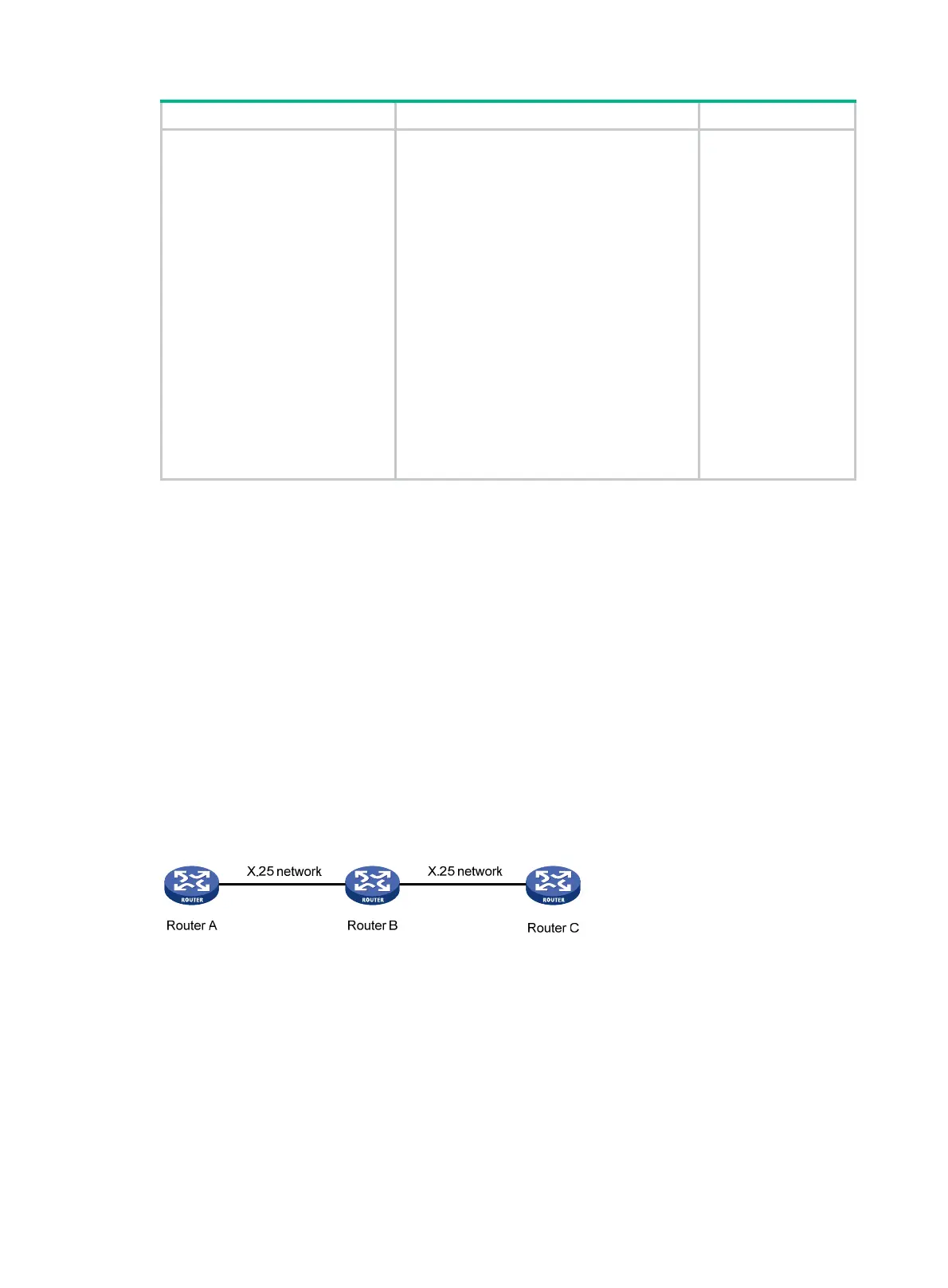328
Step Command Remarks
3. Add a switching route
• Add a PVC:
a. interface interface-type
interface-number
b. x25 vc-range { bi-channel ltc htc
[ out-channel loc hoc ] | in-channel
lic hic [ bi-channel ltc htc ]
[ out-channel loc hoc ] |
out-channel loc hoc }
c. x25 switch pvc pvc-number1
interface interface-type
interface-number [ dlci dlci-number ]
pvc pvc-number2 [ option ]
• Add an SVC:
x25 switch svc [ -number ]
x.121-address [ sub-dest
destination-address | sub-source
source-address ] * interface
interface-type interface-number [ dlci
dlci-number ]
N/A
Enabling/Disabling X.25 switching only affects call establishment, and does not affect the
established links.
The switching routes can be configured only after X.25 switching is enabled. If you disable the
switching (by using the undo x25 switching command) after configuring some switching routes,
then
• All static SVC routes will be invisible in the related display command, and PVC routes will be
visible in the related display command.
• If you execute the x25 switching command again without restart, SVC routes will be restored
and visible on using the display command.
• If you execute the save command and restart, all SVC and PVC routes will be lost.
Because the default two-way channel range (LTC=1, HTC=1024) does not support PVC
configuration, specify a virtual circuit range by using the x25 vc-range command to create a PVC.
Configuring flow control negotiation of X.25 switching
Figure 127 X.25 switching
As shown in Figure 127, Router A and Router C communicate through Router B. You can enable or
disable on Router B flow control negotiation between Router A and Router C.
• With flow control negotiation enabled between the two ends, if the flow control parameters on
the connecting links at the two ends of Router B are inconsistent, the two ends negotiate to use
the smaller parameters. Then, when Router B receives packets with M-bit 1, which indicates
that subsequent fragments exist, Router B forwards the packets directly without processing
them.
• With flow control negotiation disabled between the two ends, the flow control parameters of the
links at the two ends of Router B can be different. When Router B receives packets with M-bit 1,
it reassembles the fragments and then forwards the assembled packets instead of forwarding
the fragments directly. When Router B forwards packets to Router C, Router B might

